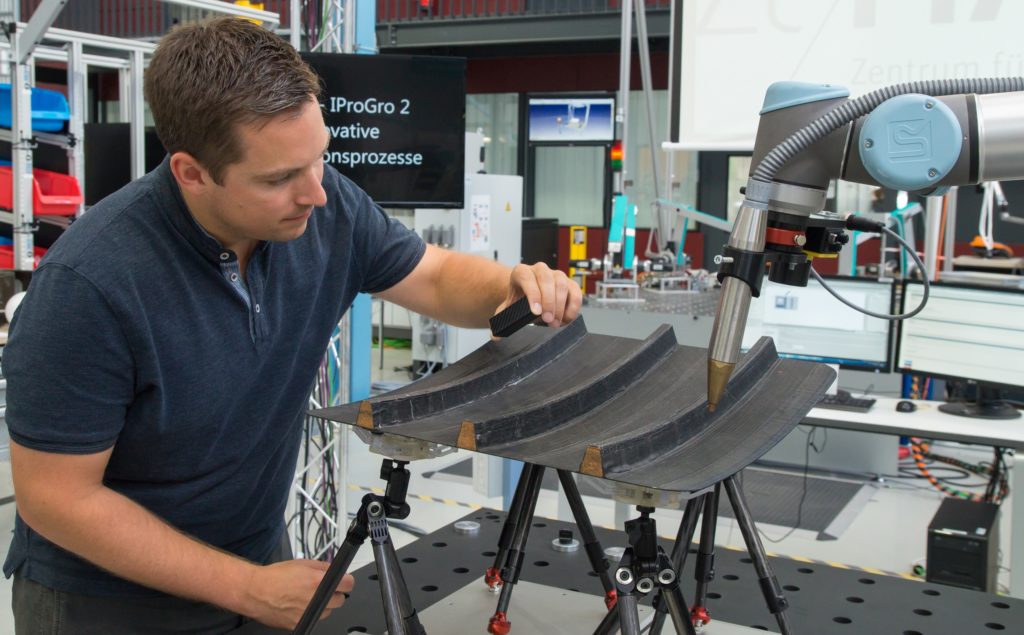IProGro² – Development of innovative production technologies for large components
Problem definition and objectives
Companies in the transport industry, such as aircraft construction, are mainly characterised by low unit numbers and long product life cycles. Therefore, construction site assembly is usually carried out here. There is no continuous development of production systems. Due to these labour-intensive assembly scopes, production is increasingly being outsourced. In order to remain competitive, suppliers in Germany as a high-wage location have a concrete need to build their own reconfigurable automated production systems for large components.

The IProGro2 project aims to contribute to the continuous development of novel and more efficient cyberphysical production technologies and to make them available for larger quantities. This is intended to sustainably promote technological leadership in Germany as a development and production location through smart automation. This includes maintaining or increasing the quality and productivity of industrial production at reasonable or competitive costs. The basis for this is provided by the knowledge gained in the IProGro project.
Procedure
In this project, application scenarios are to be examined with reference to the key technologies identified by the Federal Government, such as the production of aircraft structures and chassis for e.g. helicopters, commercial vehicles and passenger cars, but also rail vehicles made of fibre-plastic composite components. In order to ensure a broad applicability of the results and the functions and production technologies necessary for their use, the bonding of CFRP stringers in aircraft production was chosen as a use case, based on the preliminary project IProGro, since this application case is transferable to e.g. car and wagon construction. Depending on the production scenario, a manual and/or automated process should be possible.
Current project status and results
In AP1, a robot was enabled to assist a human in the surface activation of fibre plastic bonded by plasma for the bonding preparation, in AP2 the inspection of the bonding by thermography was realised. In AP3 the gripper from IProGro 1 was reworked and improved control electronics were developed. In addition, further degrees of freedom were implemented. In AP4 the stereoscopic measuring concept was extended to further modules and a method for object identification was developed. In AP5 a product and process analysis against the background of human-robot-cooperation was carried out and a planning method was developed which considers the special requirements of MRK planning. In AP6 the above described research progress was integrated into the existing IPRoGro² demonstrator.

Duration: 07.06.2015-31.12.2019
Supported by: EU EFRE
Contact: ZeMA
further information: Projekt IProGro2
